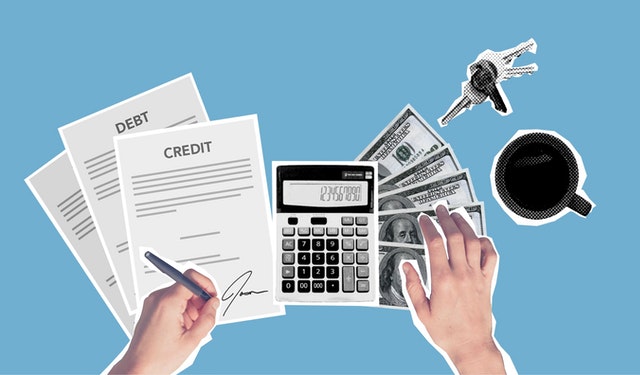
It’s payday.
You’ve been eyeing up a new pair of trainers you couldn’t justify after Christmas. However, today it’s time to treat yourself after braving January in lockdown.
You head to ASOS and just before shelling out £70 for some new Nikes, you see a much more enticing offer hovering ominously next to the checkout button.
‘Just 4 payments of £17.50 with no interest and no hard credit checks’
Which do you choose?
Most of us will look favourably at Option B. Those good at maths may even realise we can save ourselves £52.50 this month. Wait, how much was that other jacket we saw this morning…
We’ll return to this scenario later. First, let us turn our attention to the financial buzzword of the moment: Buy Now, Pay Later (BNPL). It isn’t a new phenomenon, but there are some new players in the space and the regulators are starting to pay attention.
Is Buy Now, Pay Later Anything New?
Since the good-ol-days of home order catalogues, consumers have been spreading the cost of high-street goods over time, utilising short-term store finance.
BNPL enables consumers to purchase goods on credit, paying for them usually after a set interest-free period has elapsed, or in instalments.
In this scenario, everybody can win. Consumers spread the purchase of goods, extending their purchasing power, whilst vendors benefit from increased conversions and potentially higher average transaction values.
So far, so good, and nothing particularly revolutionary.
However, the new digital-first, fintech powered iterations of BNPL are exploding in popularity. In 2020 alone, BNPL fintechs quadrupled agreements to the tune of £2.7bn adding 5 million new customers over the pandemic period.
Digital lending fintechs are, worryingly, becoming household brand names. Firms like Swedish based Klarna, or Clearpay, are profiting from snowballing growth in e-commerce, and the economic fallout of the pandemic.
How do BNPL firms make money?
BNPL firms have two key sources of revenue:
- Merchants:
-
- Firms charge merchants a fee anywhere from 2-8% of the purchase price
- Customers:
-
- Some BNPL firms charge interest based on the principle. However, many do not, provided you pay on time
- Some BNPL firms charge consumers late fees and administration charges, often capped at a percentage of the purchase price. Unique Business Models found in 2019, Afterpay reported $18.2m in late fees, which was 17% of its total revenue
With potentially punitive penalties for customers, it’s surprising many BNPL don’t perform hard credit checks, in line with FCA’s regulations. This makes them a popular option with potentially vulnerable customers in the subprime market.
But just who are these customers?
Who is using BNPL?
Data from Finder shows that digital BNPL is most popular with Millenials (1981-1996) and Generation Z (1996+). However, Generation X (1965-1980) is one of the fastest-growing consumer segments.
Firms like Klarna have invested heavily in influencer and social media marketing, which analysts have attributed to their growth in younger demographics. However, worry is festering that advertising could be reaching younger consumers who don’t have the financial experience to manage credit products.
Younger customers may not understand the implications of missed payments, such as damaged credit ratings or racking up fees for late payments.
The double-edged sword of technology
Technological advancement is often a double-edged sword. Finder found “They’re easy and convenient,“ as the main reason customers use BNPL.
In the case of BNPL, technology is the enabling factor driving down the cost of supplying credit services. This reduces the need for minimums on agreements, with credit being offered on purchases as low as £10.
Whilst smooth acceptance journeys, 24/7 access and no human interaction is the attractive proposition for digital BNPL, it’s also the Achilles heel for some consumers. This technology makes it easy to rack up multiple lines of micro-credit and complexifies the management of it.
Behavioural science may offer an answer to why BNPL, especially in multiple micro-credit transactions, may have widespread societal issues, and not just a problem for the vulnerable consumer.

Money found vs. money earned
In 1999, Nobel-Prize winning economist Richard Thaler introduced a new concept into the universe of behavioural economics. He coined the phenomenon: “Mental Accounting”.
In a nutshell, the theory highlights the way individuals deploy a set of cognitive functions to organise, evaluate and appraise their financial activities.
Additionally, it adds more weight to the irrational and imperfect market hypothesis, pointing out the often contradictory financial management of individuals.
Case in point: tax-rebates. We often consider this money found. When, in fact, it was money that was always due to us in the first place. Like finding money under the couch. We loathe spending found money on something functional.
Returning to our credit example at the start. Thaler’s theory would highlight consumers see the initial monthly saving (£52.50) as money ‘gained’. Acting as a nice dose of confirmation bias to go and pick up something else with our hard-earned capital. The danger occurs when we realise the jacket we want is also available on short term credit with no interest… And so the cycle begins.
With low-effort, no checks, subprime accepting, no maximum limits, digital lending gaining such a level of popularity there is growing concern digital-first lenders require regulation.
The Woolard Review
It was inevitable the explosive growth of digital BNPL lending would gain attention from the FCA. And to the credit of some BNPL firms, they have been crying out for it (Klarna even ran an ad campaign).
However, last week, Christopher Woolard CBE, Chair of the Review of Change and Innovation in the Unsecured Credit Market, published a report confirming many of the worries.
The report found many consumers were not aware that they had entered a formal credit agreement which might result in late fees. Even more unsettling, around 10% of BNPL customers surveyed were already in arrears.
The report called attention to pertinent examples of sports shoe retailers offering five different BNPL offerings, allowing the customer to maximise their first credit line, then move on to other providers to keep shopping. Eerily similar to Thaler’s Mental Accounting theory.
Amid the evidence, they called for full regulation of the sector. Also, setting out recommendations which would afford customers the same current FCA protections as other debt products, as well as tackling the ease of digital customer journeys.
It’s hoped ensuing regulation would both be educative and outcome-based protections. With new technology like open banking, there are digital and hassle-free ways to assess a customer’s credit history and ensure the process is still simple and safe.
The future of BNPL
“Credit is part of most people’s lives in the UK. Used well it can be a helpful tool, but can also cause consumer harm when out of control.” – Woolard Review.
In the immediate term, the government has responded to the review confirming BNPL legislation will be brought in as “a matter of priority”.
We think regulation in digital-first lending is necessary. It’s the sign of a healthy ongoing amalgamation of digital technology, finance, and societal good. Any firm who shuns regulation is probably the one you want to avoid buying your new Nikes from.
However, there is a balance to be struck. Used sensibly, this type of credit is a vital lifeline for some consumers. As the Institute of Economic Affairs (IEA) suggested, overly punitive regulation could hamper competition, innovation and penalise lower-income families or the underserved subprime market. A healthy marketplace still requires alternatives to high-cost credit, which fintechs are providing.
—
At Waracle, we work with a range of large regulated UK lenders and understand the intricacies of managing successful business models and positive customer outcomes. If you would like to find out more about our capabilities, get in touch.






